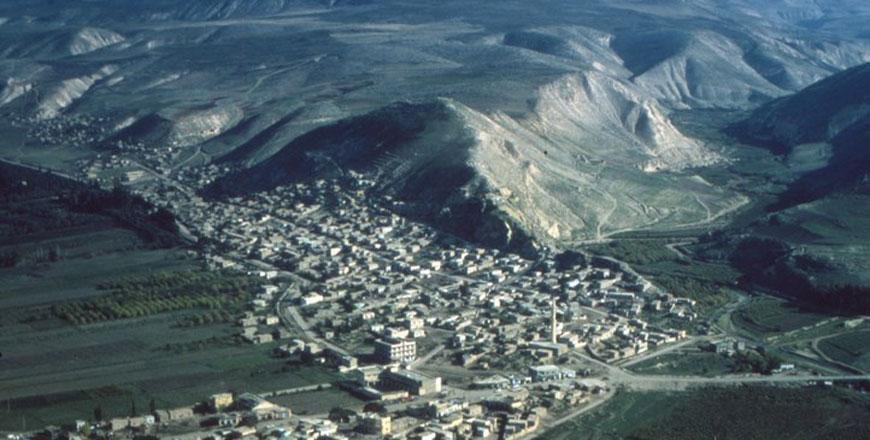You are here
Wadi Rum’s rich history revealed through ancient petroglyphs, excavated pottery
By Saeb Rawashdeh - Dec 20,2023 - Last updated at Dec 20,2023

Intact jar found accidently in 2010 at Abu Nujayla (Photo courtesy of Zeidan Kafafi)
AMMAN — Wadi Rum is a desert on the southern part of Jordan also known the Valley of Moon. Khaz’ali Canyon in Wadi Rum is the site of thousands of petroglyphs (an image created by removing part of a rock surface by incising, picking, carving or abrading) depicting interaction between humans and different animals, and these rock arts date back to the ancient times.
Furthermore, the team of archaeologists excavated and surveyed pottery sherds from the Wadi Rum regions to outline that people settled in this area either permanently or seasonally from the Neolithic period until modern times.
“The results of the excavation at the Pre-Pottery Neolithic site of ‘Ayn Abu Nukhayla where a number of curvilinear houses were uncovered, and the excavated structures at the site Hudeib er-Rih in which in situ pottery sherds were found enforces this claim,” noted Professor Emeritus Zeidan Kafafi from Yarmouk University in Irbid.
The forms of the pottery sherds under study indicate the nature of life the people they belonged to, the types are mostly cooking-pots and bowls, Kafafi continued, adding that from the Late Neolithic through the Early Bronze Age cooking pots were handmade and have lime and straw inclusions.
Furthermore, the pottery sherds belonging to the Roman and Nabataean cultures were all wheel made, have thin and fine wares. Some of the Nabataean sherds were either painted or rolled.
“It is obvious from the number of the excavated and surveyed sherds encountered in the area under study, that this region was occupied and visited during the Early Bronze Age, Roman, Nabataean and the Abbasid periods,” Kafafi underlined, adding that very few possible Iron Age pottery sherds were visible in the assemblage found at the site Huayb ar-R.
These shreds belonged from the 10th and 8th centuries BC.
“Actually, such a collection of pottery utensils must be used by a population that practiced pastoral nomadism who settled in villages-based-on- transhumance,” Kafafi said, adding that a few parallels, especially the hole-mouth jars dated to the Late Neolithic through the Early Bronze Age are observable amongst the published pottery assemblage
Large jars or pithoi similar to the one excavated in 2010 at the site Abu Najaleh/Wadi Rum were uncovered at Hujayrat Al Ghuzlan in the Aqaba region.
“During the eighties of the last century the Australian archaeologist W. J. Jobling surveyed the area extending between the two cities Ma’an and Aqaba in south Jordan. Actually in 1985 Jobling announced that Ina Kehrberg is drawing and describing of the surveyed lithics and pottery sherds. Unfortunately, Jobling passed away and nothing is published, yet,” Kafafi underlined.
The excavated pottery sherds at Rways Salm and Huayb ar-Rindicate that the uncovered structures were originally built during the Late Neolithic and continued to be used in the Early Bronze Age.
“However, the area under study in the Wadi Rum seems to be heavily occupied or used by the Nabataean, Roman and Byzantine periods. Consequently, the presence of the Late Umayyad/Early Abbasside ware sherds indicate that it was still an important path for the caravans passing by either to the north of the Arabian Peninsula or somewhere else.
Related Articles
AMMAN — Located some 500 metres from the old Amman-Jerash road, Tell Abu Suwwan represents one of the Neolithic mega sites whose occupation
AMMAN — Some of the main issues regarding the preservation and protection of cultural heritage are urban development, looting, and vandalism
AMMAN — Tell Shuneh Shamaliyyeh is located in the northern part of the eastern side of the Jordan Valley in Irbid Governorate. The Jord














